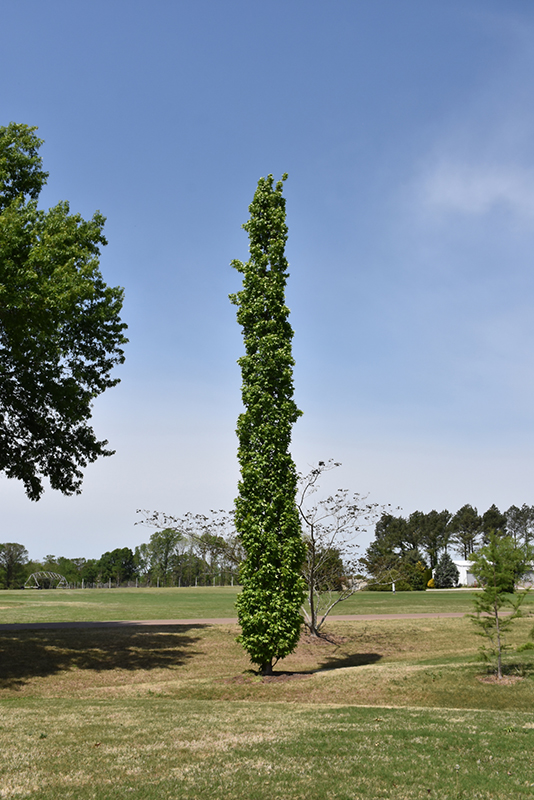Sweetgum, Slender Silhouette Liquidambar styraciflua 'Slender Silhouette' Height: 30 feet Spread: 12 feet
Sunlight:
Hardiness Zone: 5b Other Names: Liquid Amber Description: A very narrow variety that can be many multiples higher than it is wide; a stunning columnar tree perfect for articulation or garden accent; fall colors are a striking orange yellow and red. Fruit is spiny and can be somewhat messy, Ornamental Features Sweetgum, Slender Silhouette is primarily valued in the landscape for its rigidly columnar form. It has forest green deciduous foliage. The lobed palmate leaves turn an outstanding orange in the fall. However, the fruit can be messy in the landscape and may require occasional clean-up. Landscape Attributes Sweetgum, Slender Silhouette is a deciduous tree with a narrowly upright and columnar growth habit. Its average texture blends into the landscape, but can be balanced by one or two finer or coarser trees or shrubs for an effective composition. This is a high maintenance tree that will require regular care and upkeep, and is best pruned in late winter once the threat of extreme cold has passed. Deer don't particularly care for this plant and will usually leave it alone in favor of tastier treats. Gardeners should be aware of the following characteristic(s) that may warrant special consideration; Sweetgum, Slender Silhouette is recommended for the following landscape applications; Planting & Growing Sweetgum, Slender Silhouette will grow to be about 30 feet tall at maturity, with a spread of 12 feet. It has a high canopy with a typical clearance of 5 feet from the ground, and should not be planted underneath power lines. It grows at a medium rate, and under ideal conditions can be expected to live for 70 years or more. This tree should only be grown in full sunlight. It prefers to grow in average to moist conditions, and shouldn't be allowed to dry out. This plant should be periodically fertilized throughout the active growing season with a specially-formulated acidic fertilizer. It is very fussy about its soil conditions and must have rich, acidic soils to ensure success, and is subject to chlorosis (yellowing) of the foliage in alkaline soils. It is somewhat tolerant of urban pollution. This is a selection of a native North American species.![]()
![]()
![]()
![]()
![]()
![]()
![]()
![]()
![]()
![]()
![]()

